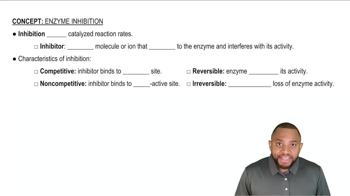What kind of inhibition (uncompetitive, competitive, or irreversible) is present in each of the following:
a. Penicillin is used to treat certain bacterial infections. Penicillin is effective because it binds to the enzyme glycopeptide transpeptidase and does not dissociate.






